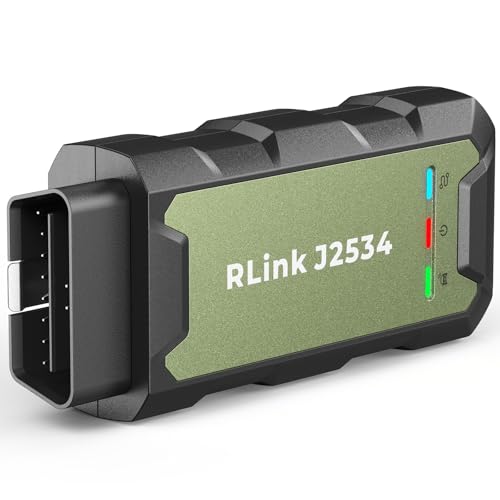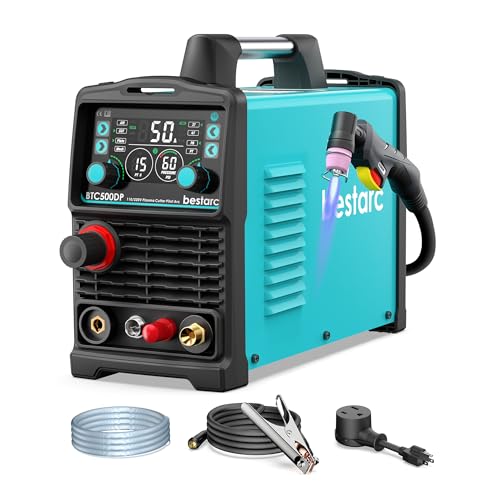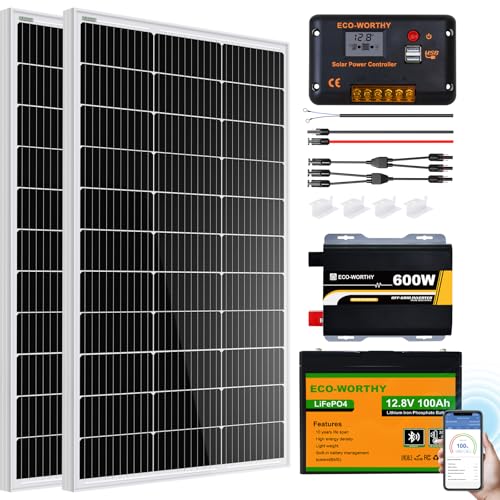When you start home improvement projects, it’s key to have outlets in the right spots. This is for both looks and safety. An electrical box extender makes this easier by allowing for outlet upgrades that keep outlets even with the wall. This is especially true in kitchens, where tile or backsplash work is common.
The Spacerr electrical outlet extenders are made to fit perfectly between outlets and electrical boxes. They help keep your outlets looking the same throughout your home. They’re easy to install and let you adjust the depth of the receptacle for a perfect fit with wall plates.
When doing outlet upgrades, safety comes first. Always turn off the power at the breaker panel and use voltage testers to check for electricity. With the right measurements and installation, an electrical box extender improves your electrical system’s function and looks.
What Is an Electrical Box Extender?
An electrical box extender is a device that fits onto an existing electrical box. It makes the box’s edge line up with the wall’s finish. This is key when walls get thicker from added materials like drywall or tile. Its main job is to keep electrical connections safe and ensure outlets and switches work right.
These extenders are made from materials like PVC or metal. They come in different sizes for various needs. For homes, the most common is the single-gang extender, measuring 2.313″ L x 4.188″ W x 1.813″ H and weighing 0.042 lb. Larger sizes are available for more connections.
- Definition of electrical box extender: A device that adapts an existing electrical box for added wall thickness.
- Electrical box extension: Essential for ensuring outlets remain accessible and secure after wall modifications.
The cost of electrical box extenders varies, from $2.57 to $188.19. The average price is about $35.67. This makes them a budget-friendly choice for homeowners looking to upgrade or renovate. Most extenders are in stock, offering a wide range of options.
| Type | Dimensions (L x W x H) | Weight |
|---|---|---|
| Single Gang Box Extender | 2.313″ x 4.188″ x 1.813″ | 0.042 lb |
| Dual Gang Box Extender | 4.1″ x 4.188″ x 1.813″ | 0.06 lb |
| 3-Gang Box Extender | 6.4″ x 4.188″ x 1.813″ | 0.2 lb |
| 4-Gang Box Extender | 8.0″ x 4.188″ x 1.813″ | 0.2 lb |
| Ceiling Box Extender | 4.35″ D x 1.5″ H | 0.2 lb |
These extenders come with a one-year warranty and must meet safety standards. They must follow the National Electrical Code (NEC) and be certified by testing labs. This ensures they are reliable and safe to use.
Why Use an Electrical Box Extender?
Electrical box extenders are great for safety and following building codes. They help with proper installation, especially in deep walls. This section will look at their safety and the need to follow building codes.
Safety Considerations
Electrical box extenders are key to avoiding electrical dangers. They ensure outlets and switches fit securely, reducing the chance of arcing and fires near flammable materials. Made from non-conductive, flame-resistant materials, they can handle heat and lower fire risks. Choosing certified extenders boosts the safety and reliability of your electrical setup.
Code Compliance
Following building codes is crucial for electrical work. Electrical box extenders help meet the National Electrical Code (NEC) standards. This ensures boxes fit flush with non-flammable surfaces, avoiding exposed wiring and ensuring safe connections. Using certified extenders proves your installation meets regulations, like those in the 2002 NEC Article 314-20. Knowing local codes is important, as they can differ by state.
| Product Name | Type | Dimensions (L x W x H) | Weight |
|---|---|---|---|
| AI-BE1 | Single Gang | 2.313″ x 4.188″ x 1.813″ | 0.042 lb |
| AI-BE2 | Dual Gang | 4.1″ x 4.188″ x 1.813″ | 0.06 lb |
| AI-BE3 | 3-Gang | 6.4″ x 4.188″ x 1.813″ | 0.2 lb |
| AI-BE4 | 4-Gang | 8.0″ x 4.188″ x 1.813″ | 0.2 lb |
| AI-BE1R | Ceiling Box Extender | 4.35″ D x 1.5″ H | 0.2 lb |
How to Identify the Need for an Electrical Box Extender
Homeowners often find they need an electrical box extender when remodeling or updating electrical fixtures. To figure out if you need one, check the gap between the electrical box and the wall. If it’s more than 1/4 inch, you’ll need an extender for a flush fit and safety.
Here are important things to think about when deciding if you need an electrical box extender:
- Wall Material and Thickness: Different materials, like tile backsplashes or extra drywall, can make a big gap from the original box.
- Code Compliance: Local and state rules might require specific spacing, which affects the need for an electrical box extender.
- Accessibility: Electrical boxes need to be easy to get to for maintenance. Any setup that blocks access might need an extender.
If you’re not sure what you need, talk to a licensed electrician. They can help find the right solution for your situation. They’ll make sure it meets the National Electrical Code and local laws.
Being careful and checking your needs can make your electrical system safer and more efficient.
Types of Electrical Box Extenders Available
It’s key to know the different types of electrical box extenders for proper use. They fit various needs and materials. This ensures they work well in different settings.
Single-Gang and Multi-Gang Options
There are many types of electrical box extenders. The main ones are:
- Single-gang extenders for one device.
- Multi-gang extenders for two or more devices, offering more flexibility.
These options meet many needs. They work well for homes and businesses alike.
Material Types: PVC vs. Metal
The material of electrical box extenders is very important. There are two main types:
- PVC extenders are great for homes. They’re light and don’t rust. They come in colors like blue, gray, and white.
- Metal extenders are stronger. They’re best for big projects or areas that get a lot of use.
Each material has its own benefits. It’s important to pick the right one for your project.
Installation Process for Electrical Box Extenders
The electrical box extender installation is easy and safe. It works with different materials like backsplashes, tile, and drywall. This guide will show you the five key steps for a successful installation.
- Measure the Area: Find out how deep your outlet is in the wall. This helps pick the right extender size.
- Cut the Extender: Cut the extender to the right depth based on your measurements.
- Add the Spacer: Attach the extender to the existing box with screws. Make sure everything is tight and secure.
- Tighten the Receptacle: Put the electrical receptacle back in the extender. It should be flush with the wall.
- Screw on the Faceplate: Finally, attach the cover plate. This gives your outlet a clean and finished look.
This installation guide focuses on safety and looks. Electrical box extenders are a cost-effective way to fix outlets that don’t fit flush. They work well for new builds and updating old ones.
If you know a bit about electricity, you can install an electrical box extender yourself. There are also waterproof and weatherproof options for outdoor use or wet areas.
There are many sizes and materials available, like plastic, metal, and adjustable ones. People like the quality and ease of use. Plus, there are refund policies if things don’t go as planned.
Tools and Materials Needed for Installation
Installing electrical box extenders needs the right tools and materials. This ensures the job goes smoothly. Here are the tools you’ll need:
- Flathead screwdriver
- Star (Phillips) screwdriver
- Tape measure
- Drill
- 1/2″ spade bit
- Jigsaw or hand saw
- Clamp
- Work surface
Make sure you have all the necessary materials ready. You’ll need one extender for each light switch or outlet. These can be found at hardware or home improvement stores. When using Trusscore Wall&CeilingBoard and Trusscore SlatWall, remember to adjust for their thicknesses.
Here are six steps to install an electrical box extender correctly:
- Shut off power to the outlet.
- Remove the outlet cover.
- Attach the electrical box extender.
- Set the depth to match the wall panel thickness.
- Cut the wall panels to fit using a jigsaw.
- Replace the outlet cover after securing the outlet with longer screws.
Following these steps will give you the best results. It’s especially useful for extending outlets in deeper walls. This method improves both function and looks in your space.
| Tool | Purpose |
|---|---|
| Flathead screwdriver | Loosening and tightening screws. |
| Star (Phillips) screwdriver | Connecting extenders and outlets. |
| Tape measure | Measuring wall depth and panel fit. |
| Drill | Creating deeper holes for installation. |
| 1/2″ spade bit | Preparing for proper outlet depth. |
| Jigsaw or hand saw | Cutting wall panels for outlet fit. |
| Clamp | Stabilizing materials during cutting. |
| Work surface | Providing a stable area for assembly. |
Common Problems Addressed by Electrical Box Extenders
Electrical box extenders solve many issues with electrical setups. They are especially useful when walls are thicker due to renovations or extra materials. These extenders help ensure devices are safely mounted, avoiding dangers from bad installations.
Dealing with Deep Walls
Many homes have deep walls because of added insulation or paneling. This creates a gap between the wall and the electrical box. Electrical box extenders offer deep wall solutions by filling this space. They make sure outlets and switches fit snugly against the wall, improving looks and use.
Correcting Device Security Issues
Loose or wobbly outlets can be annoying and risky. They often happen when devices are not mounted right because the box is too shallow. Electrical box extenders fix these issues, making installations stable. They not only cover the gap but also make devices more secure, keeping them safe and working well.
Electrical Box Cover Options
Choosing the right electrical box covers is key for safety and function. There are many cover types for single or multi-gang boxes. Knowing what you need helps pick the best covers.
Material Choices
Electrical box covers are made from various materials:
- Cast metals
- Stainless steel
- Aluminum
- Polycarbonate
- Thermoplastic
Metal covers are durable and meet building codes. PVC or plastic covers are cheaper and easy to put in.
Various Cover Types
There are different cover types for different needs:
- Weatherproof covers
- Weatherproof cast covers
- Dustproof covers
- Wall plate accessories
Weatherproof covers are great for outside. Dustproof covers protect inside parts from dust and moisture. Each type helps your electrical box last longer.
Sizes and Configurations
Electrical box covers come in many sizes for different setups:
| Cover Type | Size (Width x Height x Depth) | Usage |
|---|---|---|
| Single Gang Extender | 3-1/2″ W x 5-1/2″ H x 5/32″ D | Accommodates single devices |
| Double Gang Extender | 5-1/2″ W x 5-1/2″ H x 5/32″ D | For two devices |
| Triple Gang Extender | 7-1/2″ W x 5-1/2″ H x 5/32″ D | For three devices |
Each electrical box cover has its purpose. Picking the right size ensures a good fit. It keeps your electrical setup safe and looks good. Choosing covers that match your decor makes everything look cohesive.
Recessed Electrical Boxes: What You Should Know
Recessed electrical boxes make outlets look like they’re part of the wall. They’re great for modern homes because they keep things simple and clean. These boxes fit well with the look of today’s interiors.
Using recessed boxes is safer than other types. If installed wrong, they can cause fires. It’s key to follow local safety rules, especially when putting them in places that can catch fire. Make sure extensions don’t go over 1/4 inch to keep your home safe.
Putting in bigger outlet boxes takes about 20 minutes. Many people add more outlets, like near beds, for easier charging. Adding USB ports makes these outlets even more useful for today’s needs.
| Aspect | Details |
|---|---|
| Installation Time | Approximately 20 minutes |
| Recommended Extension Limit | 1/4 inch for fire safety |
| Box Extender Brands | Arlington (maximum of 1.5 inches for double drywall) |
| Common Enhancements | Adding USB ports for convenience |
| Typical Outlet Adjustment | Moving boxes closer to the wall (at least 1/4 inch) |
When putting in recessed boxes, you might need to cut the drywall first. Then, mud and paint around them for a nice finish. Using special mounts or alternatives can make the job easier. Knowing the benefits of recessed designs helps you make your home look good and safe.
Electrical Box Spacer: An Enhanced Solution
The use of electrical box spacers is on the rise in modern installations. A recent study shows a 12% increase in their use in the construction field. These spacers fill gaps between drywall and electrical boxes, unlike traditional extenders.
They often come with adjustable features, making them more versatile for different wall types. This is a big plus for those working on various projects.
The need for smart home devices has also grown, leading to a 20% increase in the demand for extenders. These devices need more wiring, which can be a challenge. The electrical box spacer helps align these devices, making wiring easier.
Interior designers and contractors are using spacers more, with a 15% increase in their adoption. They are especially useful for fixing issues with switch plates and outlet covers. The most popular ring size is 1/8″ for its ability to fit standard cover plates well.
Upscale homes are now using oversized rings more, with a 25% increase. This is to fit larger light switch plates. On the other hand, extenders can lengthen up to 1.5 inches or in increments of 1/4-inch, 3/8-inch, and 1/2-inch.
DIY fans have been using these solutions for over 30 years. They find spacers useful for extending outlets up to 1/4-inch without major renovations. Paintable outlet covers are also popular for keeping the look fresh after painting.
Old Work Electrical Boxes vs. New Installations
It’s important to know the difference between old work electrical boxes and new installations. Old work boxes are made for adding outlets or switches to finished walls. They don’t need to reach the studs inside. This makes the job faster and simpler.
New installations, however, need boxes attached to studs or supports. This method takes more time and often means bigger changes before wiring can be set up.
Here are some key differences between old work electrical boxes and new installations:
| Feature | Old Work Electrical Box | New Installation |
|---|---|---|
| Installation Context | Used in finished walls | Used before drywall installation |
| Supplies Needed | Retention tabs, mounting ears | Studs, additional structural support |
| Installation Time | Few hours for cables, minutes for box | More time-consuming due to structural requirements |
| Grounding Requirements | Non-metallic rarely needs grounding | Metallic often requires grounding |
| Common Use Case | Adding outlets or light switches to drywall | New construction or major renovations |
Choosing the right box is key for safety and following codes. When planning, think about these differences to get better results and happy clients.
Understanding Electrical Box Adapters
Electrical box adapters are key in making electrical systems more modern and flexible. They help change between different box types or setups, making upgrades easier. Knowing how they work can really help with your installation projects, especially in older systems.
Using these adapters can greatly improve your work in various situations. For big projects that need changes to existing systems, adapters let you make simple tweaks without a full overhaul. Here are some important things to think about when using these adapters:
- Ease of installation: Designed for easy use, electrical box adapters can often be set up with just basic tools.
- Cost-effectiveness: With prices from $101 to $250, adapters can save money by avoiding the need for new boxes.
- Multiple options: There are many types of electrical box adapters, each for different setups and loads.
| Specification | 15-Amp Circuit | 20-Amp Circuit |
|---|---|---|
| Maximum Wattage (3+ hours) | 1,440 watts | 1,920 watts |
| Wire Gauge | 14-gauge | 12-gauge |
| Length of PVC Conduit | 10-ft. | 10-ft. |
Understanding electrical box adapters is crucial for better installation work. They not only make installations easier but also ensure safety. Since these upgrades are considered intermediate, knowing how to use them can make you more confident in your work.
Best Practices for Using Electrical Box Retrofit Solutions
Using the right electrical box retrofit solutions is key for safety and following local building rules. First, assess what your project needs, especially when swapping out electrical boxes or adding extenders. Choose products from trusted brands like Leviton or Jasco. They ensure quality and often come with warranties, adding security for homeowners.
Focus on the right installation methods. Tools like the Stanley 4-1/2 in. Multi Saw help improve your work quality. Make sure all electrical boxes and extenders are flush with the wall, especially with combustible materials. This step is crucial for fire safety, highlighting the need for careful planning and execution.
Always seek advice from licensed electricians, like George Socaris, for their expertise. By adding safety measures, following electrical codes, and using smart switches from Qubino, you can make your electrical system safer and more efficient.



